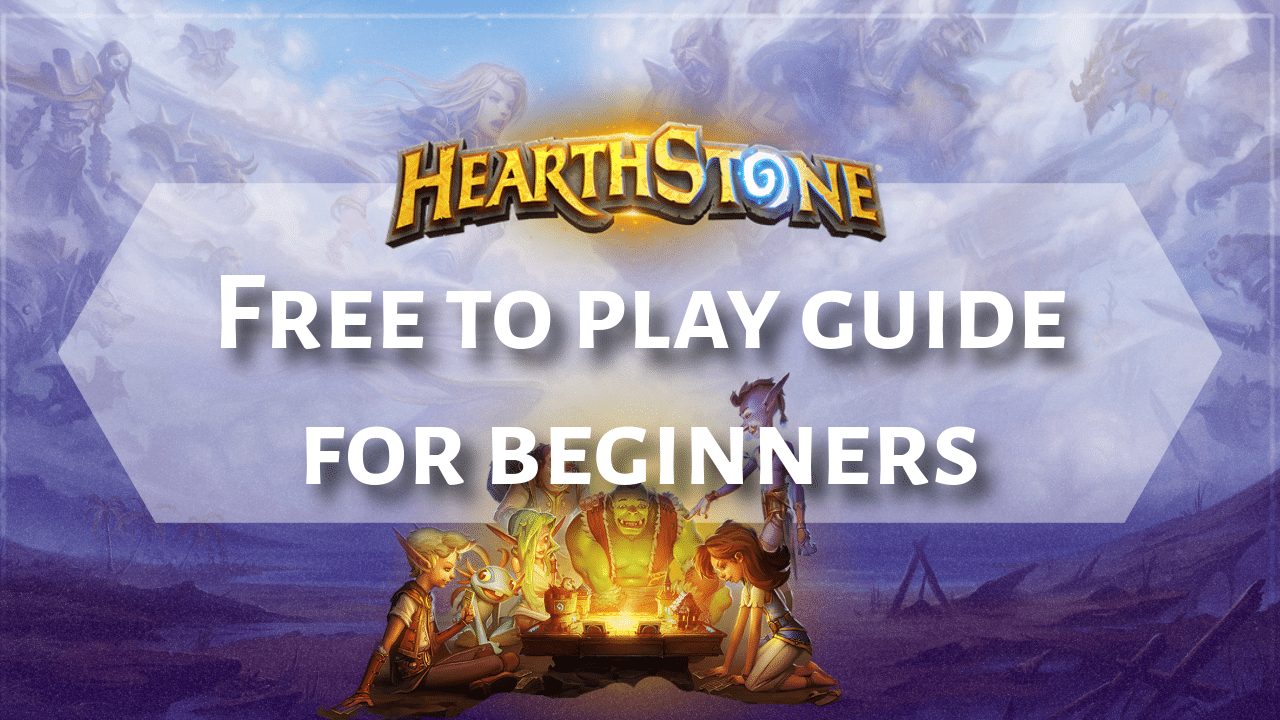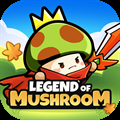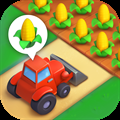Hearthstone Free To Play Guide For Beginners - Theria Games

Hearthstone Free to play guide for beginners: What is Free-to-Play (F2P)?
Free-to-Play (F2P) in Hearthstone means progressing in the game without spending real money on card packs, adventures, or other in-game items. Your collection and progress rely entirely on earned in-game currency and rewards from gameplay. While Hearthstone offers purchasable content, it is not a pay-to-win game—success depends on skill, strategic deck-building, and efficient resource management. Reaching high ranks without spending money is achievable through dedication and smart decision-making.
The free-to-play (F2P) approach in Hearthstone revolves around the idea that time and effort can substitute for financial investment. Every in-game purchase, from card packs and expansions to adventures and mini-sets, can be earned solely through consistent play and strategic resource management. To progress efficiently, players must maximize their rewards by completing daily and weekly quests, participating in game modes like Arena, Battlegrounds, and Tavern Brawl, and making smart decisions about how they spend in-game gold and Arcane Dust.
Carefully choosing which expansions to invest in, saving gold for high-value purchases like mini-sets, and crafting only essential cards are crucial elements of the F2P strategy. The challenge of competing at high levels without spending money adds an extra layer of depth and satisfaction, as every hard-earned legendary card, well-crafted deck, and ranked climb is a testament to dedication and skill. Over time, a disciplined F2P player can build a formidable collection and enjoy the full Hearthstone experience without ever making a purchase.
Getting Your Hearthstone Journey Started
Starting your Hearthstone journey begins with completing the tutorial, which introduces the game’s core mechanics and the Mage class. Afterward, focus on unlocking all hero classes by leveling each to level 10. This can be done by playing Play mode matches against real opponents or Solo Adventures against the Innkeeper. Playing in Play mode also helps complete early quests faster. Additionally, complete the Ashes of Outland prologue in the Solo Adventures tab to unlock the Demon Hunter class and receive its starting set of cards.
New players progress through the Apprentice Ranks, a crucial phase that should not be skipped. These ranks offer valuable card packs and help build experience against other new players, making it an essential step for strengthening your collection. Upon completing Apprentice Ranks, you will receive the opportunity to choose one free deck from a selection of pre-built decks, providing a significant early boost. New players reaching Bronze 10 for the first time and returning players who have been inactive for at least 90 days are also eligible for this reward. Before making a final choice, you may get to try loaner versions of these decks for a short period.
As you begin, you will also receive one-time starter quests that provide early gold rewards to help build resources. Examples include “The Duelist” (play three games in Play mode for 100 Gold), “Ready to Go!” (unlock every Hero for 100 Gold), and “Enter the Arena” (enter Arena Mode for a free Arena run). Additionally, visiting the Battle.net shop allows you to claim free content, such as the Frozen Throne Ice Crown prologue. Completing this short adventure grants a free Death Knight legendary card, usable in Wild mode or disenchantable for 400 dust to craft other cards. Taking advantage of these early rewards and opportunities is key to building a strong foundation in Hearthstone.
Mastering the Art of Earning Resources
The daily quest system is the most reliable source of free gold in Hearthstone, allowing players to have up to three active quests at a time. A new daily quest is added each day, and one quest can be rerolled to potentially get a better reward. Prioritizing quests that don’t require winning games, such as those that involve playing specific card types or casting spells, can make progression smoother. Decks can be built specifically to complete quest conditions efficiently. The “Play a Friend” quest, which typically rewards 80 gold, can be completed by playing against a friend or a secondary account, but the win must be earned through lethal damage rather than a concession.
Beyond quests, gold can also be earned by winning games in Play mode, with 10 gold awarded for every three wins in Ranked or Casual mode. New players shouldn’t shy away from Ranked Play, as Ranks 25 through 20 provide a safe learning environment without the risk of losing rank. Another consistent way to expand a collection is the weekly Tavern Brawl, which unlocks at level 20 for any hero class. Winning just one match in this mode each week grants a free Standard card pack.
Solo Adventures, such as the Book of Heroes and Book of Mercenaries, offer additional free packs. Completing each hero’s adventure rewards a class-specific card pack, and finishing all the adventures in a series may grant a golden Standard pack. These modes provide a mix of rewards and story-driven gameplay without requiring a competitive collection.
Arena is a draft-based game mode where players build decks from random card choices instead of using their own collections. The first Arena run may be free for new players, but subsequent runs cost 150 gold. Rewards scale with performance, including card packs, gold, and Arcane Dust. Players who can consistently achieve around seven or more wins per run can turn Arena into a profitable gold-to-reward conversion method. Major game updates sometimes trigger Arena resets, rewarding players with a free Tavern Ticket if they had an active run before the reset.
The Rewards Track grants experience points (XP) for playing games and completing quests, unlocking gold, card packs, cosmetics, and even legendary cards. Regularly checking and claiming rewards ensures nothing is missed. The Recruit a Friend program provides extra benefits for inviting new players, including card packs and exclusive hero portraits. Some players create secondary accounts to take advantage of this system, though it requires additional effort.
Special events and promotions frequently offer bonus rewards through limited-time quests and in-game activities. Blizzard occasionally hosts Twitch Drops, where watching Hearthstone streams can earn free in-game items. Keeping up with official announcements ensures players don’t miss out on these opportunities to maximize their free resources.
Building Your Card Collection Wisely
When opening card packs from a new expansion, prioritize opening the first 10 packs of that set, as Hearthstone guarantees at least one legendary card within the first 10 packs of any expansion. This ensures an early boost to your collection. If you are starting fresh or returning after a long break, Catch-Up Packs may be available, providing a large number of cards from previous expansions to help build a viable collection.
After obtaining the guaranteed legendary from a set, you can decide whether to continue opening packs from the same expansion or focus on others that contain cards you need. For long-term collection building, prioritizing the newest expansion is generally a good strategy, as its cards will remain in Standard format the longest.
Hearthstone’s crafting system allows you to create specific cards using Arcane Dust, which is obtained by disenchanting unwanted cards. However, be cautious when disenchanting, especially early on, as some cards may become useful later for deck-building or quests. It is generally best to avoid disenchanting unless you have more than two copies of a non-legendary card. Additionally, keeping extra copies of cards can be beneficial, as nerfed cards can be disenchanted for their full crafting cost after balance updates, providing a valuable dust refund.
Using Arcane Dust strategically to craft essential cards for budget-friendly and meta-relevant decks is the most efficient approach. Focusing on building a few strong, cohesive decks is more effective than randomly crafting cards. If collecting golden cards is of interest, note that upgrading a normal card to its golden version is now more cost-efficient than crafting a brand-new golden copy.
Hearthstone’s duplicate protection system is designed to make collecting cards more efficient and rewarding by ensuring that players receive new cards rather than unnecessary duplicates. This system applies to all rarities, helping players build their collections more effectively over time.
For legendary cards, the system guarantees that you will not receive a duplicate until you own every legendary card from that particular set. This means that each legendary card you open from a pack will always be one you do not yet own, making it significantly easier to complete a full legendary collection without wasting resources on unwanted duplicates. Once you own all legendaries in a set, duplicate legendaries may start appearing in packs.
For non-legendary cards (common, rare, and epic), the system ensures that you receive no more than two copies of any given card—the maximum number allowed in a standard deck—before duplicates start appearing. This prevents players from repeatedly opening excessive copies of the same card while still missing others from the set.
By reducing randomness and making pack openings more predictable, this system allows players to strategically collect the cards they need, making it easier to complete full sets over time. Combined with smart gold spending, crafting decisions, and event rewards, duplicate protection plays a crucial role in helping players, especially those following a free-to-play approach, build a well-rounded and competitive collection more efficiently.
Strategies for F2P Success in the Long Run
Making quest completion a daily habit is essential for maximizing your free gold income in Hearthstone. Regularly checking your quest log and completing daily quests ensures a steady flow of resources. If you receive a quest that is too difficult or time-consuming, make use of the daily reroll option to try for a quest with a higher gold reward or one that is easier to complete. Efficient questing will allow you to accumulate gold more effectively, helping you build your collection faster.
As a free-to-play player, focusing on budget-friendly decks is crucial for staying competitive. Aggressive deck archetypes that aim to win quickly tend to be more affordable, as they rely less on expensive legendary and epic cards. Prioritizing decks that require minimal crafting while still being effective in the meta allows for better resource management. Staying informed about the current meta and identifying strong budget deck options is equally important. Since the meta shifts frequently, keeping up with new strategies and adapting accordingly will help maintain a competitive edge.
Success in Hearthstone isn’t just about having a strong deck—it also requires good gameplay skills. Regular practice will improve your understanding of different matchups and card interactions, allowing you to make better strategic decisions. If your primary goal is to complete quests, don’t hesitate to concede unfavorable matchups quickly to save time for more productive games. Learning from each game and refining your playstyle will enhance your long-term success.
Managing your in-game gold wisely is another key to long-term free-to-play success. Saving gold for mini-sets, which release approximately every two months, provides excellent value by guaranteeing a specific set of cards, including epics and legendaries. When a new expansion launches, spending gold on the first 10 packs ensures a guaranteed legendary from that set. Skilled Arena players can also turn gold into additional packs and dust, making Arena a valuable investment for those who consistently perform well. However, spending gold on regular individual card packs beyond the initial 10 from an expansion is usually less efficient compared to mini-sets or Arena runs.
Although the goal is to remain free-to-play, small optional purchases can provide a significant boost to your progress. Offers like the Welcome Bundle (if available), limited-time promotional bundles, mini-sets, or the Tavern Pass can accelerate collection building and enhance the overall gameplay experience. These purchases are entirely optional but can offer strong value for their cost.
Patience and persistence are essential for long-term success in Hearthstone as a free-to-play player. Building a competitive and diverse collection takes time, and progress may feel slow at first. However, by consistently completing quests, managing gold efficiently, improving gameplay skills, and staying informed about the meta, you can steadily grow your collection and enjoy the game without spending money. Stay focused on gradual improvement, and you’ll find success over time.
Common Mistakes to Avoid
Skipping the apprentice ranks on a new account is a major mistake, as it causes you to miss out on valuable free card packs and early game experience. These ranks provide a beginner-friendly environment to learn the game while earning rewards that will help build your initial collection. Another common pitfall is spending gold too freely on regular card packs from the shop. Outside of the first 10 packs of a new expansion, which guarantee a legendary, purchasing individual packs is usually an inefficient use of gold compared to investing in mini-sets or Arena runs.
Disenchanting cards without a clear purpose can also be detrimental, especially for new players who might not yet understand the long-term value of certain cards. It is important to be cautious when deciding which cards to disenchant, as they may become useful in future decks or balance changes could make them stronger. Similarly, trying to build too many different decks or play multiple hero classes too early can spread resources too thin. When starting out, focus on building one or two strong, budget-friendly decks rather than diluting your collection across too many different archetypes.
Ignoring daily quests or failing to complete them consistently slows down progress significantly, as daily quests are the most reliable source of free gold. Making it a habit to check and complete quests every day will ensure a steady flow of resources. Lastly, getting discouraged by losses can hinder improvement. Every game, whether won or lost, is an opportunity to learn and refine strategies. Analyzing mistakes, understanding matchups, and adapting playstyles will lead to steady progress over time. Staying focused, patient, and strategic will maximize long-term success in Hearthstone.
Conclusion: The Rewarding F2P Journey
Playing Hearthstone as a free-to-play (F2P) player is a deeply rewarding journey that requires a balance of strategic resource management, patience, and consistent effort. Unlike paying players who can quickly expand their collections, F2P players must be deliberate in how they earn and spend in-game resources, making careful decisions about which cards to craft, which expansions to invest in, and which game modes to prioritize. Building a competitive collection and reaching high ranks without spending money is entirely possible by fully utilizing in-game rewards, completing daily and weekly quests, and planning gold usage wisely.
To succeed as a F2P player, it’s crucial to focus on budget-friendly decks that require minimal legendary and epic cards while still being competitive in the current meta. Understanding the shifting meta and adapting your decks accordingly will improve your performance over time. Beyond deckbuilding, refining gameplay skills, recognizing favorable matchups, and making efficient plays are just as important as having a strong collection. Instead of chasing every new powerful card, prioritize gradual collection-building through duplicate protection, smart crafting choices, and gold-efficient purchases like mini-sets.
Experimentation and deck refinement are part of the fun—testing different archetypes and playstyles will not only make the experience more enjoyable but also help develop a deeper understanding of the game. Staying informed about balance changes, upcoming expansions, and special events ensures that F2P players can take advantage of opportunities to maximize their resources. While progress may take time, persistence and smart planning will allow F2P players to compete at high levels, achieve satisfying milestones, and fully enjoy Hearthstone without ever spending money.













